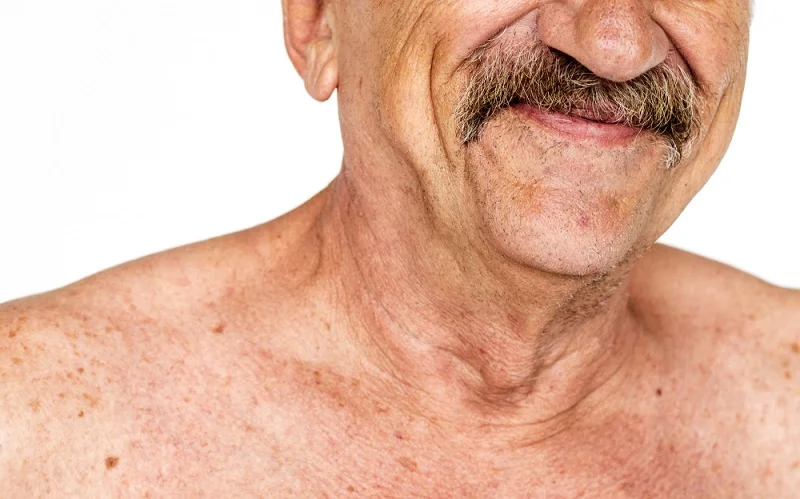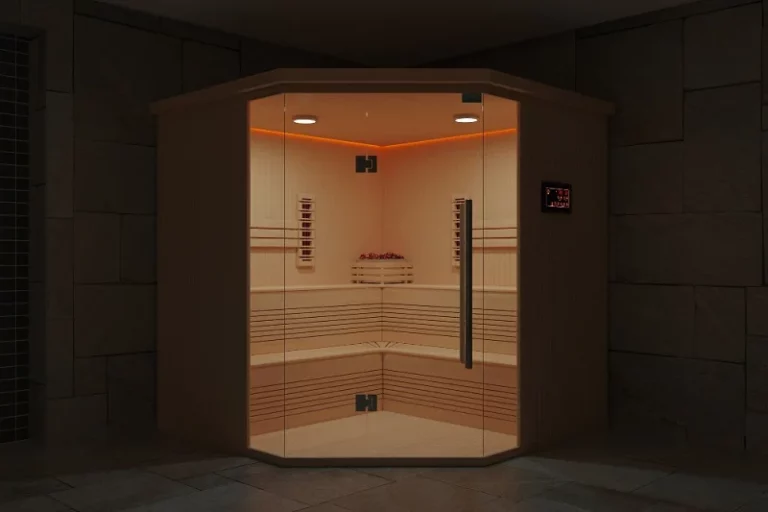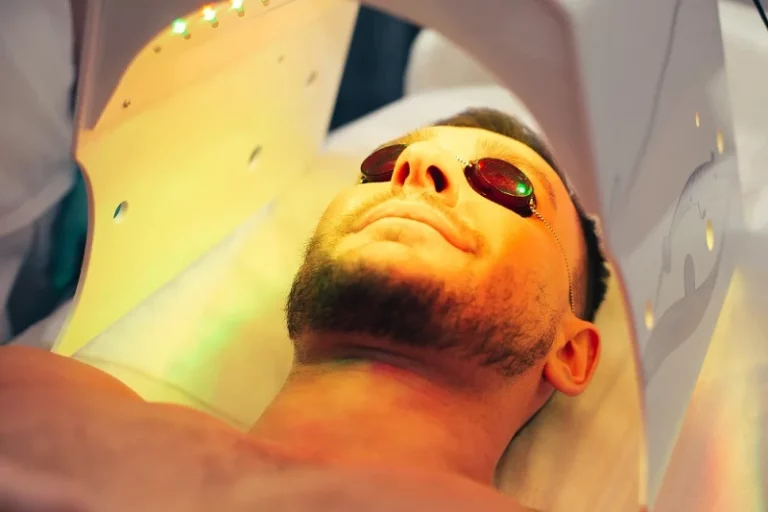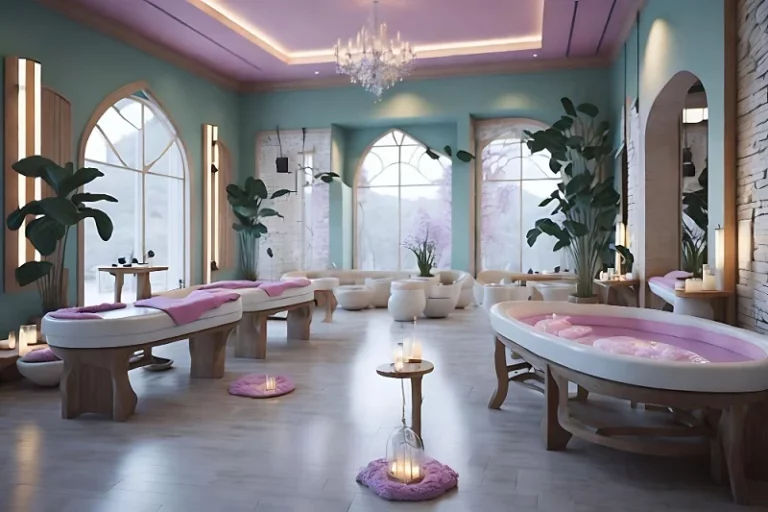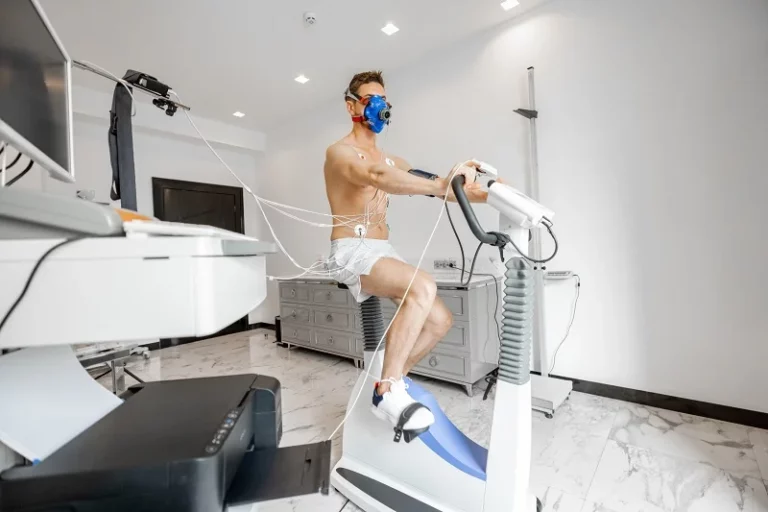Cure Sun Spots With Cryotherapy Treatment 2023
Have you ever struggled with sun spots and wondered how to effectively get rid of them? Well, Cryotherapy might just be the solution you’ve been searching for.
Cryotherapy is a non-invasive treatment option that targets those pesky sun spots. By freezing the affected area with liquid nitrogen, dermatologists can effectively remove these spots without the need for invasive procedures. As someone who has personally undergone cryotherapy for sun spots, I can attest to its effectiveness.
One of the reasons why cryotherapy is such a popular choice among dermatologists is its ability to precisely target the affected areas. The freezing process destroys the excess pigmentation responsible for sun spots, allowing healthier skin to emerge. Whether it’s one spot or multiple, cryotherapy can address your specific concerns.
If you’re considering cryotherapy as an option for sun spot removal, consult with a trusted dermatologist who specializes in this procedure. They will assess your skin condition and determine if cryotherapy is the right indication for you. So say goodbye to those troublesome sun spots and hello to clearer, more radiant skin!
Causes and Symptoms of Sun Spots
Sun spots, also known as solar lentigines or age spots, are flat, brown patches that appear on the skin. These spots are caused by prolonged exposure to UV radiation from the sun. When the skin is exposed to sunlight, it triggers an increase in melanin production, which leads to the formation of these dark patches.
These spots usually occur in areas that are regularly exposed to the sun, such as the face and hands. They can vary in size and shape but are generally harmless. However, they can be aesthetically bothersome for some individuals who may wish to reduce their appearance.
One of the main causes of sun spots is excessive exposure to UV radiation. Spending long hours under the sun without protection increases your risk of developing these spots. It’s important to note that sun spots are different from freckles or moles and should not be confused with them.
The symptoms of sun spots are relatively straightforward. They manifest as flat patches on the skin with a darker pigment compared to the surrounding areas. The color can range from light brown to dark brown or even black. In most cases, these spots do not cause any pain or discomfort unless they become irritated or inflamed due to external factors.
While sun spots themselves are generally harmless and do not pose a threat of developing into skin cancer, it’s essential to monitor any changes in their appearance or characteristics. If you notice irregular borders, rapid growth, bleeding, or itching associated with a spot, it is advisable to consult a dermatologist for further evaluation.
It’s worth mentioning that cryotherapy is one of several treatment options available for reducing the appearance of sunspots. This procedure involves freezing the targeted area using liquid nitrogen or another cooling agent. The extreme cold temperature destroys unwanted pigmentation cells on the skin’s surface.
However, like any medical procedure, cryotherapy may have potential side effects and risks associated with it. These can include temporary redness, swelling, blistering, or changes in skin color. It’s crucial to consult with a healthcare professional before undergoing any treatment to ensure it is suitable for your specific case.
How Cryotherapy Works for Sun Spot Removal
Liquid nitrogen is applied directly to the sun spot. The extreme cold temperature destroys the excess pigment cells. The treated skin will gradually peel off, revealing new, healthier skin underneath. Multiple cryotherapy sessions may be required for optimal results.
Cryotherapy is an effective treatment for removing sun spots on the skin. This procedure involves the application of liquid nitrogen directly to the affected area. Liquid nitrogen is extremely cold and helps freeze and destroy the excess pigment cells responsible for sun spots.
The process begins with a dermatologist or skincare professional applying liquid nitrogen to the sun spot using a cotton swab or spray device. As soon as it comes into contact with the skin, it rapidly cools down, creating an intense freezing sensation. While this might sound uncomfortable, it is generally well-tolerated by most individuals.
Once applied, the extreme cold temperature of liquid nitrogen causes the excess pigment cells in the sun spot to freeze and ultimately die off. Over time, as these damaged cells break down, they are naturally eliminated from the body’s waste system.
After cryotherapy treatment, patients can expect some changes in their skin’s appearance. Initially, there may be redness and swelling around the treated area due to blood vessels constricting in response to extreme cold temperatures. However, this typically subsides within a few hours or days.
As time progresses, patients may notice that their treated skin starts to darken and form a crust-like texture. This is a normal part of the healing process as new skin cells regenerate beneath the surface. Eventually, after about one to two weeks following treatment, this crust will slough off naturally.
It’s important to note that cryotherapy for sun spots usually requires multiple sessions for optimal results. Each session helps target different layers of pigmentation within the sun spot and ensures thorough removal over time.
The number of sessions needed varies depending on factors such as individual skin type, the size and depth of the sun spot, and the desired level of improvement. In some cases, patients may see significant improvement after just one or two sessions, while others may require several treatments to achieve their desired outcome.
Benefits and Effectiveness of Cryotherapy for Sun Spots
Cryotherapy is a revolutionary treatment option that offers numerous benefits and high effectiveness in removing sun spots. This quick and relatively painless procedure has gained popularity due to its impressive success rates and minimal downtime compared to other options. Cryotherapy not only targets sun spots but also improves overall skin texture and tone, making it a comprehensive solution for those seeking radiant and flawless skin.
One of the key advantages of cryotherapy is its speed and ease. Unlike other treatments that may require multiple sessions or lengthy procedures, cryotherapy can be completed in just one session. This makes it an ideal choice for individuals with busy schedules who want to address their sun spots efficiently. Moreover, the procedure itself is relatively painless, ensuring a comfortable experience for patients.
It excels with high success rates. The targeted freezing temperatures destroy the excess pigmentation responsible for these dark spots, resulting in their gradual disappearance over time. It’s important to note that while some patients may see immediate results, others may require multiple sessions depending on the severity of their sun spots.
In addition to effectively eliminating sun spots, cryotherapy offers additional benefits by improving overall skin texture and tone. The freezing temperatures stimulate collagen production in the treated areas, leading to tighter and smoother skin. This can help reduce the appearance of fine lines, wrinkles, and even acne scars. As a result, cryotherapy not only provides spot-free skin but also contributes to a more youthful complexion.
Compared to alternative treatments such as chemical peels or laser therapy, cryotherapy boasts minimal downtime. After undergoing the procedure, patients can resume their daily activities without significant interruption. While some redness or mild swelling may occur immediately after treatment, these side effects typically subside within a few hours or days at most.
Preparing for a Cryotherapy Treatment for Sun Spots
Cryotherapy is an effective treatment option for sun spots, also known as age spots, that can help restore your skin’s natural radiance. Before undergoing cryotherapy, it’s important to properly prepare yourself to ensure the best possible results. Here are some essential steps to follow before your cryotherapy treatment:
- Avoid excessive sun exposure before the procedure: It is crucial to protect your skin from further damage caused by the sun before undergoing cryotherapy. Excessive sun exposure can make your skin more sensitive and increase the risk of complications during the treatment. Make sure to wear sunscreen with a high SPF and protective clothing when going outside.
- Inform your dermatologist about any medications or allergies you have: Before undergoing any cosmetic procedure, it is vital to inform your dermatologist about any medications you are currently taking or any allergies you may have. Certain medications or allergies can affect how your skin reacts to cryotherapy, so it’s important for your doctor to be aware of these factors beforehand.
- Follow any specific pre-treatment instructions provided by your doctor: Your dermatologist may provide you with specific instructions to follow before your cryotherapy session. These instructions could include avoiding certain skincare products or treatments such as microdermabrasion, chemical peels, or tanning beds in the days leading up to your appointment. Following these guidelines will help ensure optimal results and minimize potential risks.
- Arrive at your appointment with clean, makeup-free skin: It is essential to arrive at your cryotherapy appointment with clean and makeup-free skin. This allows the dermatologist or esthetician performing the treatment to thoroughly assess and prepare the target area for cryotherapy application.
During a cryotherapy session for sun spots, liquid nitrogen is applied directly onto the affected areas of the skin using a cotton swab or spray device. The extremely cold temperature freezes the sun spots, causing them to blister and eventually fall off. After the treatment, you may experience temporary redness or mild discomfort, but this typically subsides within a few hours.
To aid in your recovery and optimize the results of cryotherapy for sun spots, here are some additional tips:
- Apply soothing creams or lotions recommended by your dermatologist to alleviate any discomfort or redness.
- Avoid picking at or scratching the treated area as this can increase the risk of infection and delay healing.
- Protect your skin from the sun’s harmful rays by wearing sunscreen with a high SPF on a daily basis.
- Follow up with your dermatologist for any necessary post-treatment care or evaluation.
In some cases, if there is uncertainty about whether a sun spot is benign or potentially cancerous, your dermatologist may recommend a skin biopsy before proceeding with cryotherapy. This helps ensure that appropriate treatment is provided based on an accurate diagnosis.
What to Expect During a Cryotherapy Session
Cryotherapy sessions are an effective and popular treatment for sun spots. If you’re considering this procedure, it’s important to know what to expect during your session. Here are some key points to keep in mind:
Duration of the Session
Typically, cryotherapy sessions last only a few minutes per spot. The duration may vary depending on the size and number of sun spots being treated. Your dermatologist will assess your specific needs and determine the appropriate length of each session.
Sensations Experienced
During a cryotherapy session, liquid nitrogen is used to freeze the sun spots. While this process is generally well-tolerated, some patients may experience mild discomfort or a stinging sensation at the treatment site. It’s important to communicate any discomfort you feel with your dermatologist so they can adjust the treatment accordingly.
Temporary Side Effects
After cryotherapy, it’s common to experience temporary redness and swelling at the treated area. This is a normal response as your skin reacts to the freezing temperatures. These side effects usually subside within a few hours or days, depending on individual healing capabilities.
Numbing Cream Application
To minimize any potential discomfort during cryotherapy, your dermatologist may apply a numbing cream prior to the procedure. This cream helps numb the treatment area, making it more comfortable for you during the session. If you have concerns about pain or sensitivity, don’t hesitate to discuss this option with your dermatologist beforehand.
Cryotherapy for sun spots offers several benefits such as targeted removal of damaged skin cells and stimulation of collagen production for healthier-looking skin. By understanding what happens during a cryotherapy session, you can approach it with confidence and make informed decisions about your skincare journey.
Aftercare Tips for Cryotherapy Treatment of Sun Spots
Apply a gentle moisturizer to the treated area as it heals.
After undergoing cryotherapy treatment for sun spots, it is essential to provide proper care to the treated area. One crucial step in the aftercare process is applying a gentle moisturizer. Cryotherapy can leave the skin dry and flaky as it heals, so using a moisturizer helps replenish lost moisture and promotes faster healing. Look for a moisturizer specifically formulated for sensitive or post-treatment skin, as these are often free from harsh ingredients that could irritate your skin further.
Protect your skin from sun exposure with sunscreen and protective clothing.
Sun protection becomes even more critical after receiving cryotherapy treatment for sun spots. The treated area will be particularly sensitive to sunlight, making it vulnerable to damage from harmful UV rays. To shield your skin, apply a broad-spectrum sunscreen with an SPF of 30 or higher before stepping outside. Reapply every two hours or more frequently if you are sweating or swimming. Consider wearing protective clothing such as long sleeves, wide-brimmed hats, and sunglasses to minimize direct sun exposure.
Avoid picking or scratching at the treated spots.
While it may be tempting to pick at scabs or flakes that form during the healing process, it is crucial to resist this urge after cryotherapy treatment. Picking or scratching at the treated spots can disrupt the healing process and increase the risk of infection or scarring. Instead, let any scabs naturally fall off on their own accord. If necessary, cover the areas with breathable bandages to prevent accidental scratching and promote faster healing.
Follow any post-treatment instructions provided by your dermatologist.
Aftercare instructions provided by your dermatologist are tailored specifically to your individual needs and should always be followed diligently. These instructions may include specific skincare products to use, how often you should apply them, and any additional precautions you need to take. Your dermatologist may also provide guidance on when to schedule follow-up appointments or what signs of complications to watch out for. By adhering to these instructions, you can ensure the best possible outcome from your cryotherapy treatment.
Is Cryotherapy the Right Option for You?
Now that you have a better understanding of sunspots and how cryotherapy works for their removal, it’s time to consider if this treatment is the right option for you. Cryotherapy can be an effective solution for those looking to fade or eliminate sun spots. Its freezing temperatures target the pigmented cells, causing them to break down and eventually fade away. However, it’s important to consult with a dermatologist or skincare professional before undergoing any treatment. They can assess your specific situation and determine if cryotherapy is suitable for your skin type and condition.
If you’re tired of dealing with sun spots and want a quick and efficient solution, cryotherapy might be worth considering. It offers numerous benefits, including minimal downtime, targeted treatment, and potential long-lasting results. Remember to follow the pre-and post-treatment instructions provided by your dermatologist to ensure optimal outcomes. Take the first step towards achieving clearer skin by scheduling a consultation with a skincare professional today.
FAQs
Can cryotherapy completely remove sun spots?
Cryotherapy can significantly fade or eliminate sun spots, but complete removal may not always be guaranteed. The effectiveness of the treatment depends on various factors such as the size, depth, and pigmentation of the sunspot. Consult with a dermatologist to determine realistic expectations based on your specific case.
How many cryotherapy sessions are required for sun spot removal?
The number of cryotherapy sessions needed varies depending on individual circumstances. In some cases, one session may suffice, while others may require multiple treatments spaced several weeks apart for optimal results. Your dermatologist will develop a personalized treatment plan based on your needs.
Is cryotherapy painful?
During cryotherapy treatment, you may experience some discomfort or stinging sensation as the cold temperatures penetrate your skin. However, most people find it tolerable and report minimal pain during the procedure.
Are there any side effects of cryotherapy for sun spots?
Temporary side effects such as redness, swelling, blistering, or scabbing may occur after cryotherapy treatment. These usually subside within a few days to a couple of weeks. It’s crucial to follow your dermatologist’s aftercare instructions to minimize the risk of complications.
Can I wear makeup after cryotherapy for sun spots?
It is generally recommended to avoid wearing makeup immediately after cryotherapy treatment. Your skin needs time to heal and recover. Your dermatologist will provide specific guidelines on when it is safe to resume using cosmetics in the treated area.
